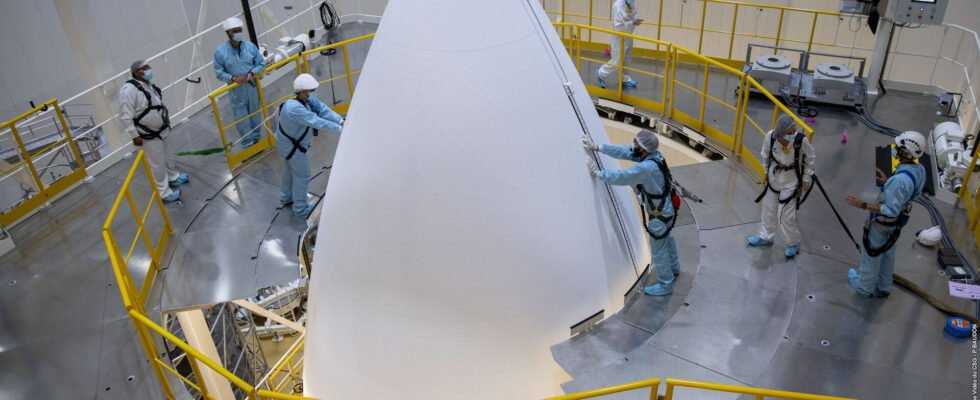The new European Ariane 6 rocket is on its way to Guyana, where it will carry out the final tests before its maiden flight in mid-2022.
2022 will be the year of the maiden flight of the new European Ariane 6 rocket. The main components of the launcher are now on their way to the Guyanese space center in South America to prepare for D-Day. ArianeGroup, the French company responsible for the development and integration of the launcher, announced in a January 4 press release.
The trip, which is done by sea, will take several days. The arrival of the two stages of the rocket in the area is expected in mid-January. Beforehand, the two parties had to be gathered in Bremen, Germany, to set sail for Guyana aboard a ship, which will successively cross the North Sea, The English Channel and then the Atlantic.
Combined tests, the final step for Ariane 6
On site, a new stage will begin: that of the assembly of the two floors. It will be done horizontally, that is to say with the launcher in the lying position. The rocket will then be straightened in the assembly building, thanks to a gantry capable of putting it vertically. The addition of booster thrusters (two or four depending on the configuration chosen) will occur later.
But for those who hope for a flight immediately, they will still have to wait. ” This first complete copy of Ariane 6 is intended for the combined tests of the launcher with its new launch pad », Warns ArianeGroup. The new launch pad, which took years to emerge from the earth, has been ready to operate since the fall of 2021. All that’s missing is the rocket, in short.
There will be a firing, but static. Or rather, firing to see if everything is going well. It will be the Vulcain 2.1 engine, which provides the propulsion of the launcher at the time of take-off, which will be mobilized, with several ignitions from April 2022. This will then be the start of the combined tests, but with one exception: the boosters will remain inert. .
” For the combined tests, the boosters which do not need to be fired will be charged with an inert material, but they will make it possible to reproduce the mass and the size and to test the docking operations with the launcher. », Explains Franck Huiban, director of civil programs at ArianeGroup, quoted in the press release. All this will be done on the launch pad.
Further tests will be carried out this spring. While less spectacular than engine ignition, they are just as important, like filling and emptying tanks and flight software. These are also critical points for the safety of the launcher on the launch pad, but also for the reliability of its trajectory in the sky.
What about the top floor test? As there is no question of making this copy leave, at least not immediately, how to test the behavior of the upper part of Ariane 6? To do this, a parallel test will take place with an additional example of this stage, powered by the re-ignitable Vinci engine. This test will be done in Germany, in Lampoldshausen.
” The success of these tests will demonstrate the robustness and efficiency of the Ariane 6 launch system. It is indeed essential to anticipate all potential risks and to finalize all checks in conditions as close as possible to flight, to ensure the successful inaugural launch of Ariane 6 », Continues Franck Huiban.
Ariane 6’s maiden flight is expected around the middle of the year.

